It’s mid year and I have recently changed jobs. In the past I have worked for cloud vendors (Microsoft & Amazon), where you are indoctrinated in content, not spoon fed, but you have information readily available.
Today I am part of a technical consultancy (A cloud partner) called V2 Digital. How do I learn? What are my mechanisms. My goal by end of year is to be Professional / Expert level certified in all 3 major public clouds.
Perhaps you are new in the Cloud Computing game, maybe you work for a partner or in a company where you are on hook for advancing your architecture. What to do you?
So in this post I will walk you through the process of how I learn, how I stay up to date and the mechanisms I use to keep across technology trends at a high level, and how I deep dive. Note, this is my process today, it has changed over time based on my commitments (time and family). Whilst this works for me, there are many other ways I have not listed that may work for you.
Building a Feed
Rather than hunting down content, I build mechanisms to have content come to me. Each day when I start my day I look through my email, scan Slack and they come to me.
All 3 cloud hyper scalers (AWS, Azure and GCP) have an updates feed. The easiest path to keep abreast with what is changing is to consume this updates feed. It could be via your browser, it could be an RSS feed, you may even write something custom. With 5 updates per day (approx.), just absorbing these updates and clicking through the odd link is helpful.
| Provider | Update URL | Updates RSS Feed |
| Amazon | https://aws.amazon.com/new/ | https://aws.amazon.com/about-aws/whats-new/recent/feed/ |
| Azure | https://azure.microsoft.com/en-au/updates/ | https://azurecomcdn.azureedge.net/en-au/updates/feed/ |
| Google Cloud | https://cloud.google.com/release-notes | https://cloud.google.com/feeds/gcp-release-notes.xml |
I used to use a RSS feed reader (Feedly) in the early days, but these days working for any organisation, the first thing i usually do it create a channel in their instant messaging application (Amazon Chime, Slack, Teams). This is a great way to bring others along for the ride and to scale your impacts .
In Microsoft Teams you can add a RSS feed by following instructions here and in SLACK you can add RSS feeds by following this article.
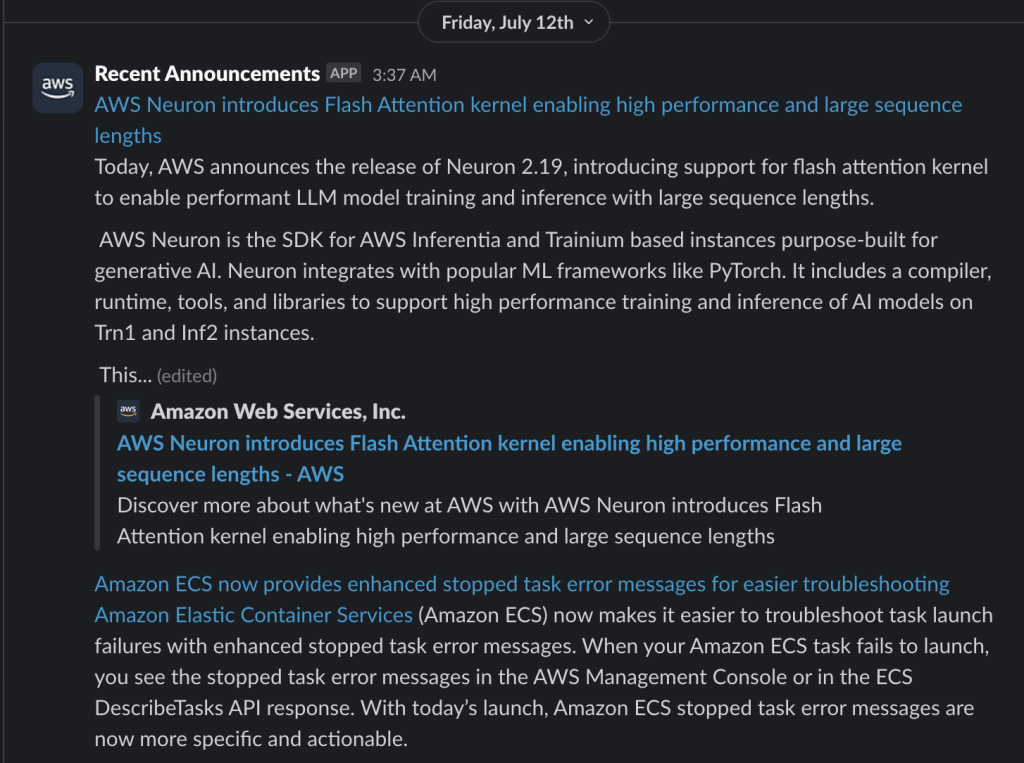

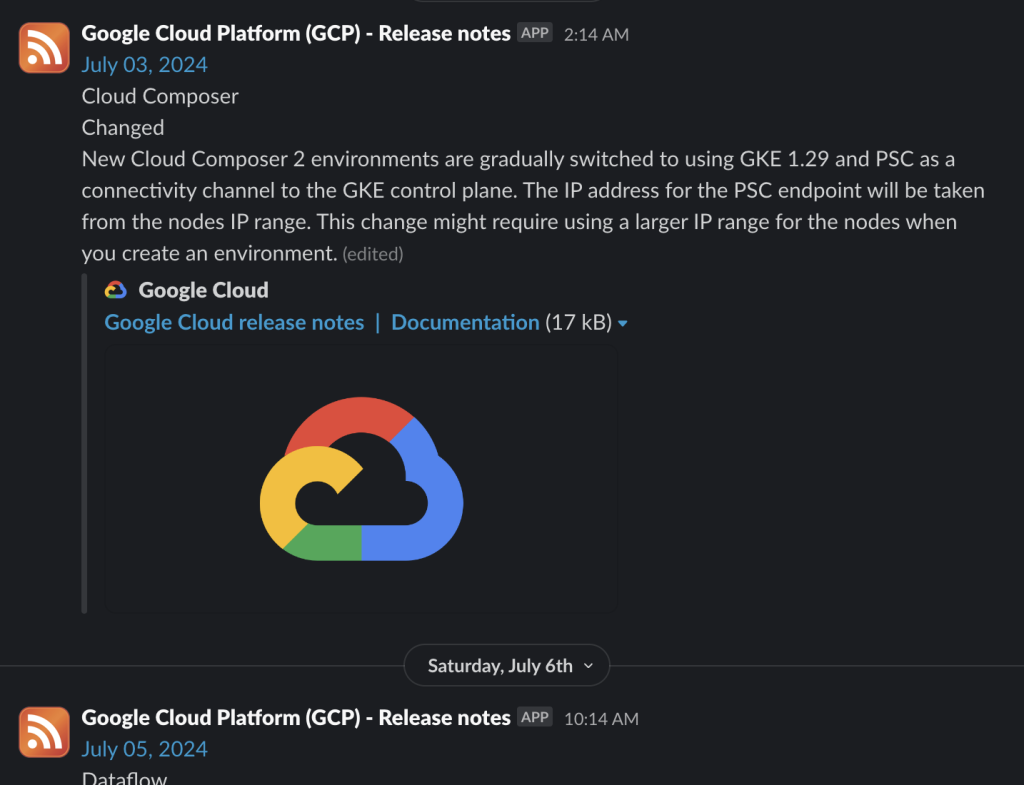
Burner & Sandbox Accounts
It’s one thing to read about updates, it is another thing to get hands on. Whilst all providers have free tiers (see below), there are limitations. If you can afford to have a burner & sandbox account they are a great way to up-skill.
The premise of these accounts are to act as a playpen, an account where you can test, learn, hypothesise without impacting production and critical workloads. Done right these can be cost effective. Do you need a large instance to test a script or process? Maybe, but probably not. Use a burst-able instance, free tiers and those cheaper tiers are your friend. They let you prove that hypothesis. I use at my employer (V2 Digital) a sandbox account. Recently I needed to build out a solution on technology I was not familiar with (conceptually yes, but in a practical sense no), having a sandbox enabled me to up skill, de-risk our engagement and delight our customer.

Free Tiers
In all clouds, some services are free either for a period of time or indefinitely. These tiers are often limited in scope, computational power but will allow you to learn concepts much like having a sandbox.
In the past I have used the Azure IOT F0 (Free Tier) heavily (see my other posts on this) and unless I am doing something special, free tiers are often low on throughput allowing you to learn in a very low volume manner. AWS Lambda has 1M free invocations each month (for ever). A great way to learn event driven architecture. Be aware of what is free and you would be surprised on the solutions you can create.



Email Lists & Mailing Groups
I am a person of habit, much of what I do is passive and pushed to me. Much like a publisher / subscribe mechanism, I subscribe to topics and they appear in my email inbox. I still use email as a means to keep up to speed. Whilst not cloud specific I subscribe to email lists that often spike my interest. The two main newsletters I read are
– DevOps Weekly
– TLDR (Various Flavours)
What I like about these newsletters is they often cover industry events (such as KubeCon) or have links to engineering blogs that discuss interesting challenges. For example Netflix’es blog on Enhancing Netflix Reliability with Service-Level Prioritized Load Shedding, one of my favourite tech blogs to read expands my mind. As a builder I am used to patterns such as exponential back offs, circuit breakers and queues to deal with excessive load, but this expanded my mind to another pattern, service level prioritised load shedding. I added this pattern to my toolbox.
Find some mailing groups. Here is a link to a website that lists top 16 lists in 2024 that are similar to TLDR.
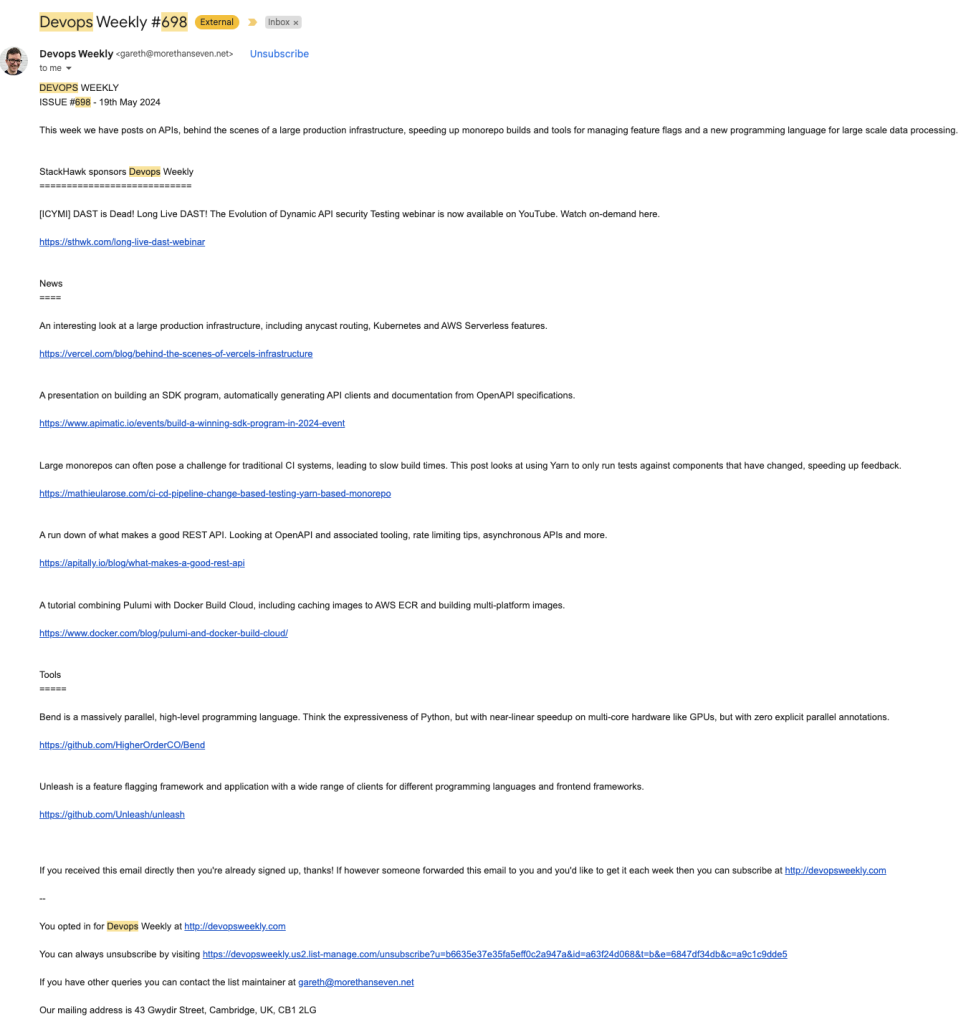


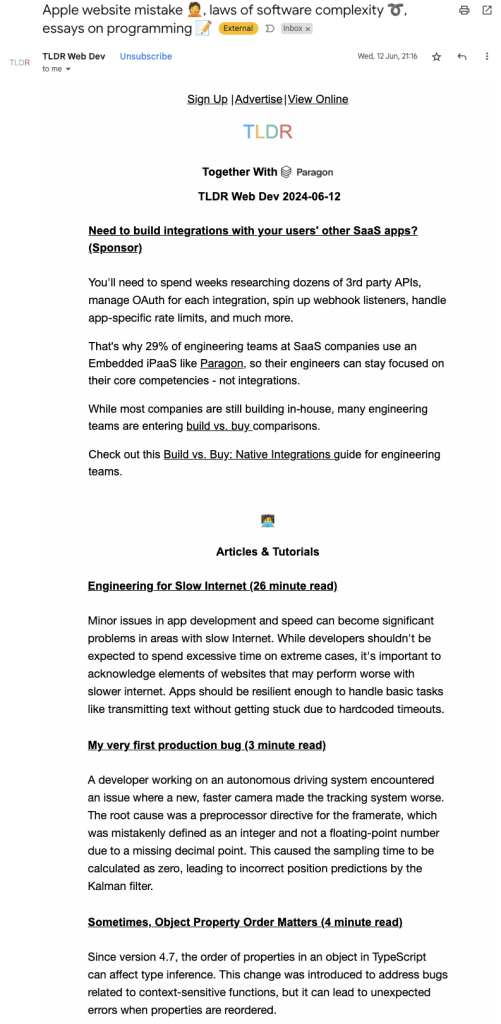
Exams
If you are not keeping score its just practice. I am not 100% sold on the ideas of certification to prove your metal, it’s one data point, but it does put you to the test. I authored a post “IT Certification – Is It Even Relevant, Should You Get Certified, What Will You Learn And How Do You Pass?” and fundamentally certification provides you a ticket to the dance. It helps you learn and provides you foundational knowledge.
The premise between Azure Functions, AWS Lambda and Google Cloud Functions are fundamentally the same, and hence there is learning to be had in taking a vendor certification that often extend outside the given platform.
As an example, many of the more basic (Associate level) Microsoft certifications I take without study, I leverage my experience in other vendors, because functionally they are at their core the same, with the differences being around the edges.
I regularly take exams, it keeps my saw sharp and with discounts (50% off when you pass an AWS exam) and bundles they are often way to make yourself more employable. You may find your employer will often refund certification exams.
Vendor Learning Paths
In 2024, I use vendor learning paths over specific training platforms such as Pluralsight & Udemy because they have become so good. In the past I was a huge ACloudGuru user but today Microsoft Learn and AWS Training are really really good. These platforms will in many cases provide simulations and cover learning paths that provide you structured learning to so you can understand concepts.


Stack Overflow Developer Survey
Not to call out on company, but I do look forward to the annual Stack Overflow Survey. It helps me to keep my finger on the pulse, what technologies are resonate. It helps me to calibrate on where I should focus my calories (Writing TCL/TK plugins is probably not where I should be spending my calories)
This is the voice of the developer and its super easy to absorb.


Meetups
Whilst most of the mechanisms above are theoretical, hearing in person what other people and organisations are using in terms of technology can help to calibrate and inspire your learning path. Meetups often highlight end to end solutions, how a problem was solved. Make the time, get out in the community and absorb what others are doing, and if you can give back.
My favourite meetups are Melbourne Infrastructure Coders and a meetup that I co-run, Builders After Dark.
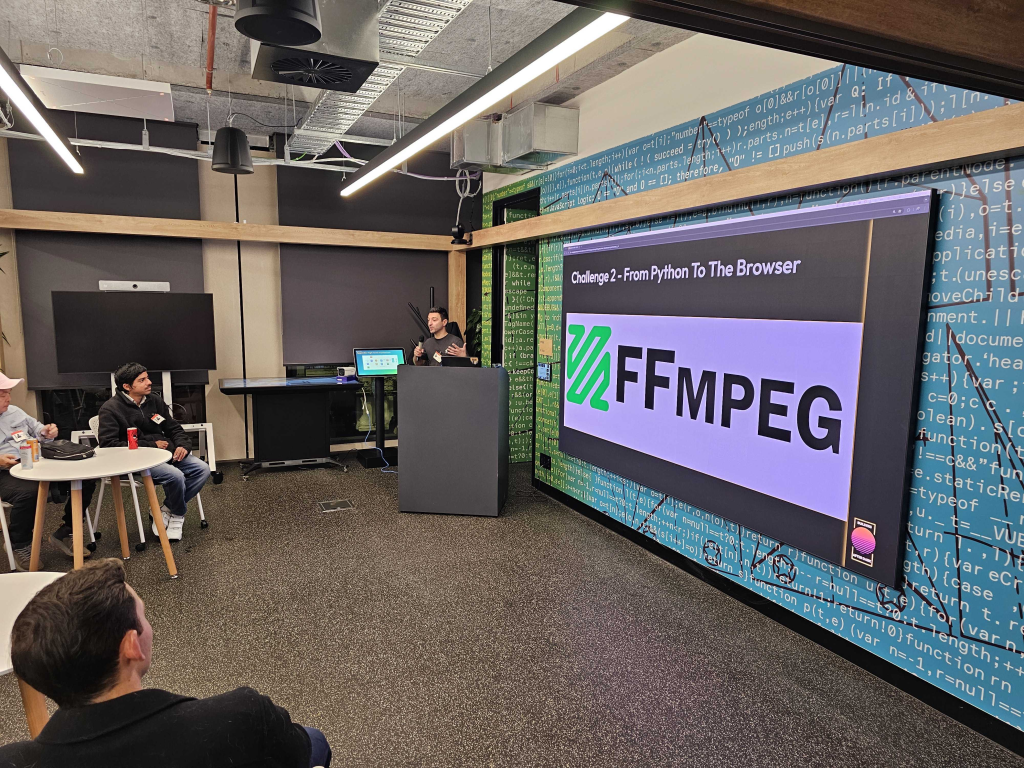
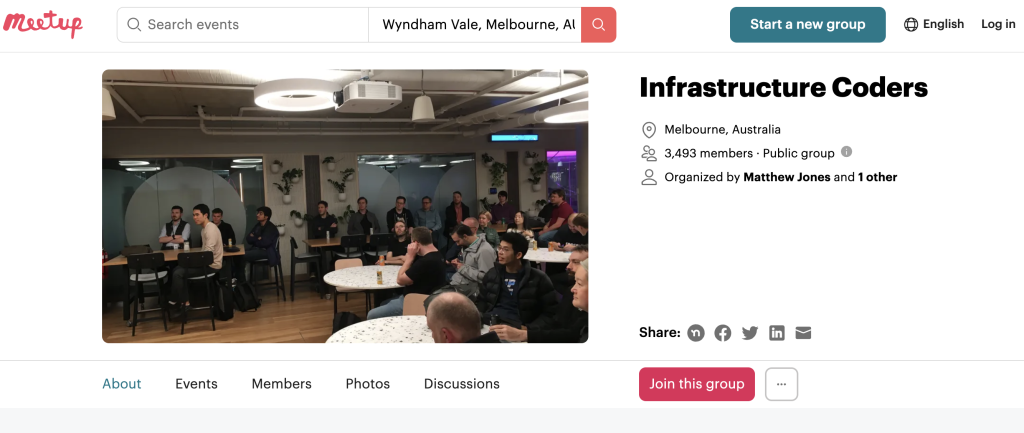

Summary
There are plenty of mechanisms you can employ to learn Cloud Architecture. The most important thing is you do something. Regardless how small it is, those small steps on a regular basis will add up to a large journey. Learning is a life long journey, regardless of your career stage, you are in control.
Thanks
Shane Baldacchino

There are some good takeaways!! Thank you for writing about it. Good luck with your new role!!
Thanks Upen, good luck with what ever you are trying to learn. It’s not easy but we just need to chip away.
This article is an insightful and motivating guide for anyone aiming to deepen their understanding and expertise of cloud architecture across AWS, Azure, and GCP. I really appreciate how the author “Shane Baldacchino” emphasizes building mechanisms like using updates feeds and sandbox accounts to stay current and hands-on with the latest technologies. The advice on utilizing free tiers and gaining practical experience is particularly helpful. The balance between passive learning through newsletters, and actively testing knowledge through certifications creates a clear and manageable path for continuous growth.
For those looking to reinforce their skills, CertsLab (https://www.certslab.com/microsoft.html) and AmazonExams (https://www.amazonexams.com/exams.html) offer excellent resources and practice exams to help prepare for cloud certifications. This is truly valuable guidance—thank you for sharing!